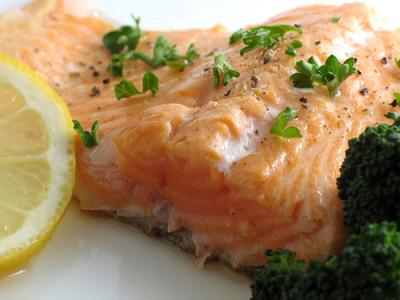- MENU
- HOME
- SEARCH
- WORLD
- MAIN
- AFRICA
- ASIA
- BALKANS
- EUROPE
- LATIN AMERICA
- MIDDLE EAST
- United Kingdom
- United States
- Argentina
- Australia
- Austria
- Benelux
- Brazil
- Canada
- China
- France
- Germany
- Greece
- Hungary
- India
- Indonesia
- Ireland
- Israel
- Italy
- Japan
- Korea
- Mexico
- New Zealand
- Pakistan
- Philippines
- Poland
- Russia
- South Africa
- Spain
- Taiwan
- Turkey
- USA
- BUSINESS
- WEALTH
- STOCKS
- TECH
- HEALTH
- LIFESTYLE
- ENTERTAINMENT
- SPORTS
- RSS
- iHaveNet.com: Health
10 Ways to Get Your Omega-3s Without a Pill
Sarah Baldauf

Omega-3 supplements are everywhere, but do you really need one?
You've heard -- perhaps many times over -- that omega-3 fatty acids are essential to good health, and solid research supports some heart-protective attributes. But it can be a challenge to get enough in one's diet.
While omega-3 supplements, often made from fish oil, offer to simplify the task, those products aren't necessarily as good an alternative.
"To some extent, the public views supplements as something other than medication, but [a supplement] is medication," says David
Siscovick, codirector of the Cardiovascular Health Research Unit at the
The AHA places particular emphasis on the omega-3 heavy hitters, the fatty fish. For people with coronary heart disease, the AHA recommends up to 1 gram total of EPA and DHA -- two forms of omega-3 -- per day, "preferably from fatty fish."
Omega-3 capsules, according to the AHA, could be considered in consultation with a physician. And for those who need to lower their triglycerides, the AHA calls for 2 to 4 grams per day by capsule, under a physician's direction; such high intake could lead to excessive bleeding in certain people.
Some experts think that other groups of patients should also be encouraged to take omega-3 supplements.
A paper published this month in the
The paper puts an emphasis on omega-3 supplements. And Lovaza, a prescription omega-3 pill approved by the
Siscovick, who conducted some of the research that the new paper summarizes, says the paper may overstate some of the powers of omega-3s. "The clinical trials that are positive are given more weight than those that are negative," he says. For example, the paper suggests that omega-3s have a beneficial effect on atherosclerosis, or buildup of plaque in the arteries, Siscovick says. "I think that's very questionable." As for expanding the range of medical conditions against which omega-3s supplements--or Lovaza--could be wielded, he says, "I just don't think the evidence is there yet."
So what does this all mean for the majority of Americans? "Modify diet rather than [taking] prescription Lovaza or stocking up on vitamins," says Siscovick, who thinks the AHA recommendations are appropriate. Siscovick points to the twice-weekly regimen of fatty fish as a do-able task.
Lavie, however, says that following the AHA's recommendation for people with coronary heart disease is tough to do through diet alone, requiring at least four servings of fish per week, he estimates. "To get protective amounts, most people are going to have to take a supplement," Lavie says, noting that a lot of his patients' main type of fish is catfish, which isn't particularly high in EPA or DHA. "I want to promote the principle," he says. "I don't want to promote a certain product."
For those who prefer to go the dietary route, there are quite a few options.
Fatty fish are certainly ideal for getting EPA and DHA omega-3s, but plant sources can help boost your omega-3 intake in the
form of ALA. Here are some ways the
Tuna.
Bluefin tuna is particularly high in EPA and DHA omega-3s, but the
Salmon.
Atlantic wild packs the most significant EPA-DHA wallop of the salmons, according to the Agricultural Research Service of the
Mackerel. Mackerel meat is often very oily, providing a good helping of EPA and DHA per serving.
Trout. Wild rainbow trout has one of the highest concentrations of EPA and DHA per serving, according to the Agricultural Research Service.
Herring.
This small oily fish has been a staple in Nordic countries. Pickled, marinated, smoked, or otherwise prepared, it offers a generous helping of EPA and DHA.
Sardines.
Though a turnoff to some, these oily fish -- along with cousin anchovy -- can have a significant amount of omega-3.
Soybeans.
Get yours in the form or tofu and edamame, the Japanese appetizer, for a dose of ALA, a plant form of omega-3.
Walnuts.
Nuts, in general, offer healthful benefits to one's diet. The walnut offers an especially large helping of omega-3 in the form of ALA.
Flaxseeds.
Get ground flaxseed to sprinkle on cereal, or use flaxseed oil in salad dressings to incorporate this ALA-rich seed.
Canola oil.
Used as a cooking oil in place of other vegetable oils, canola can increase one's dose of ALA omega-3s.
© U.S. News & World Report
AGING | ALTERNATIVE | AILMENTS | DRUGS | FITNESS | GENETICS | CHILDREN'S | MEN'S | WOMEN'S
Health - 10 Ways to Get Your Omega-3s Without a Pill